Original air date: 26 January 1984

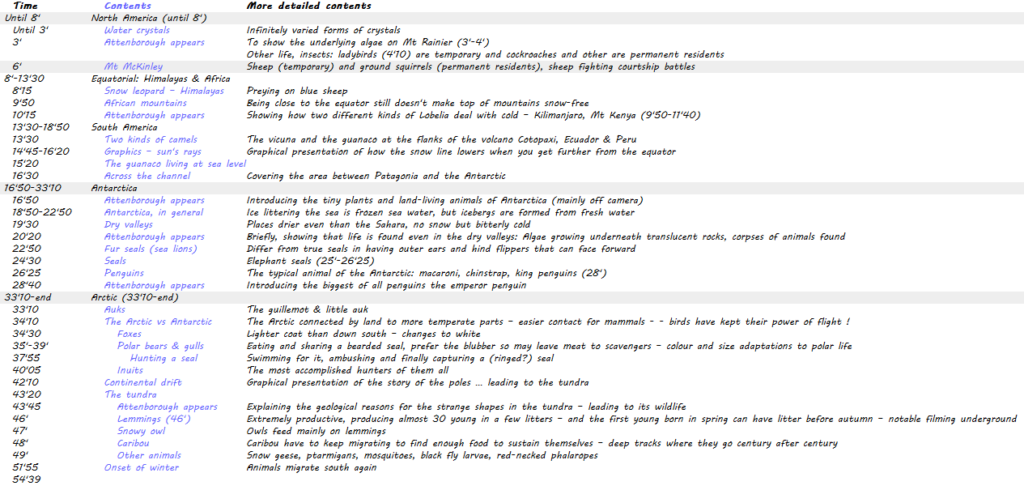
As seen in the images above the story is geographical. It starts in the Rocky mountains of North America before going to South America. In the meantime a detour is made to the Himalayas and the highest peaks of Africa was necessary. From South America the story goes to Antarctica before crossing the globe to the Arctic following similar-looking birds.
Selected sequences:
There is no way to ignore any sequence in which a rare member of the ‘big cats’ appears. In this episode the Himalayan part includes two sequences of the rare snow leopard. First is a sequence starting with a kind of an introduction, the rare blue sheep … and the rarer still predator snow leopard (blue sheep is not their only food though).
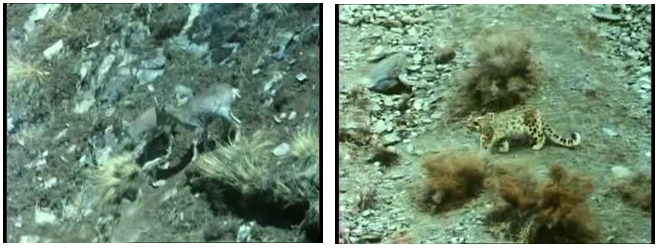
As the snapshot on the left shows the sheep is brilliantly camouflaged – until it moves.
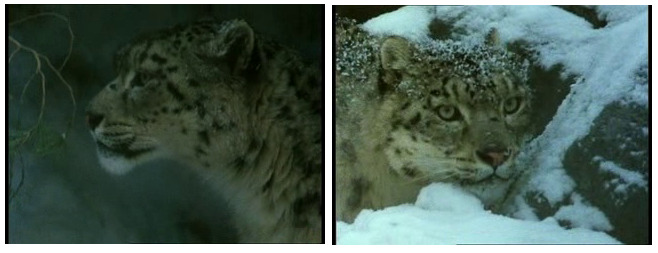
Having introduced the species is followed by a sequence of closer-up of one individual, presumably the same as in the previous sequence. Just managing to film so close is an amazing feat.
The Antarctic
Algae growing underneath rocks (20’35)
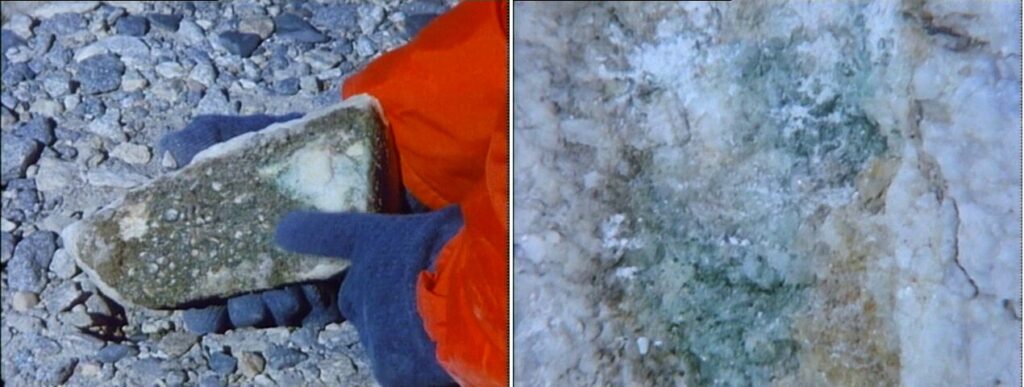
Attenborough holding a rock. Underneath the rock algae have managed to grow and getting light it needs through the translucent rock. On top of the rock it is obviously too cold. On the right green patches of green can even be seen inside cracks in the rock where algae have managed to grow too. There is a similar sequence in a later series (Life in the freezer, The Big Freeze).
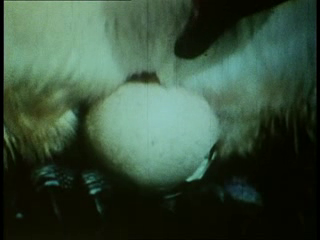
The filming the emperor penguins in the Antarctic hatching a young is impressive. A lot of the filming is obviously done in blistering cold. Filming in the Antarctic demanded the team would sacrifice Christmas, 1980, with their families because they would have to join a royal navy ship that was going there .*
Story telling, at its best
Switching from the Antarctic (where you have the black and white penguins diving in) and the Arctic (where you have the, also black and white, auks) coming out of the sea. Somewhat surreptitious.
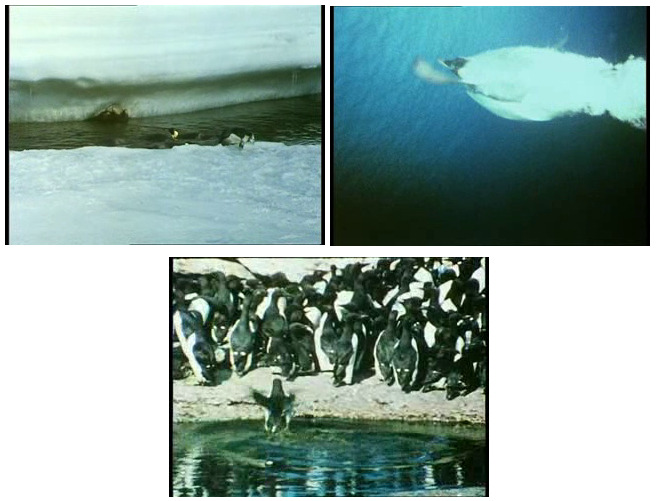
In the Antarctic penguins are filmed taking a dive and swimming in the sea (using their wings to propel themselves). Then they seem to come out the the sea again, except these birds are using their wings to do so. This part of the sequence is filmed using auks in the Arctic (30’03). The storytelling is left to the animals.
Story telling (again)
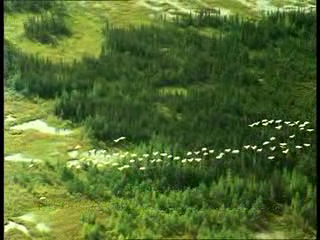
the first tall trees and then let go of them (53’15)
Nearing the end of the episode it is time to prepare to introduce the next one. This is done in a very unusual way: Attenborough has been recording the lives of various animals doing their summer duties, mating, having young and raising them. The young have reached the mature age of being able to travel south (migrate) with their elders. As the snow geese and caribou head back south for the winter the cameraman “hitches a ride” with the geese, flying above them just to make sure the viewers can appreciate the ride with their fellow travellers, however there is a slight problem, the geese fly too far south. Actually it is the caribou, on ground, that are going only as far south as the “first tall trees”. So there the team let go of their fellow travellers, the geese and Attenborough, having left the story telling to the wild animals, introduces the next episode:
“But by late August, the snow geese sense the imminence of winter and start to head southwards again.
The caribou, too, end their grazing, and start to plod back across the tundra. As they go, they continue to feed, building up the reserves of fat they will need to sustain themselves through the winter. As the weather gets colder and colder, the need for shelter becomes more urgent and the herds may cover 25 miles in a day. And then, at last, the returning travellers reach the first tall tree. It’s the start of the great coniferous forest that lies south of the tundra right round the globe. The snow geese will fly on for thousands of miles, but the caribou have reached their wintering grounds. The forest is a sanctuary which will protect them from the bitter winter cold and it’s here that we shall be coming in the next programme.”
References*
Life on Air pp. 294-9.